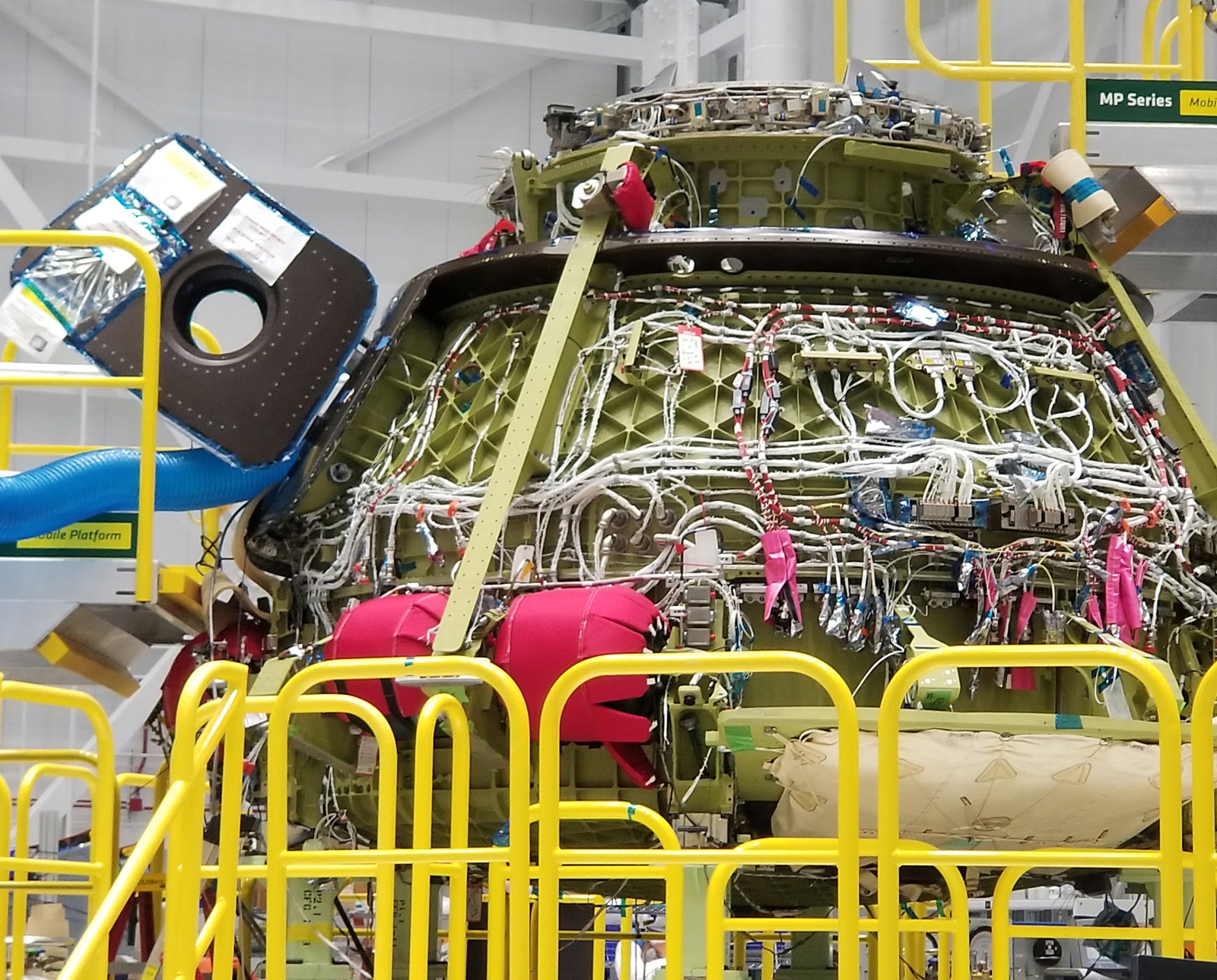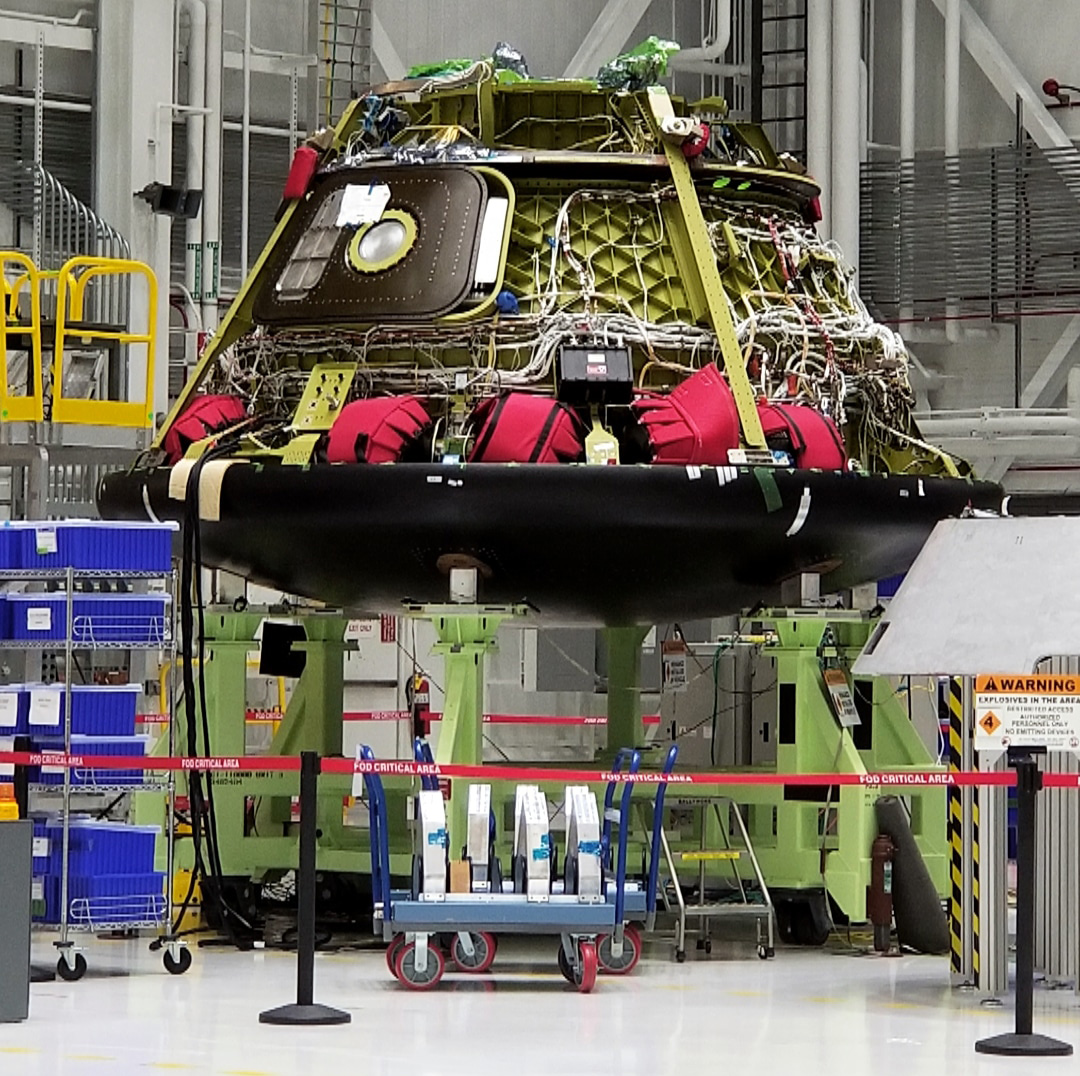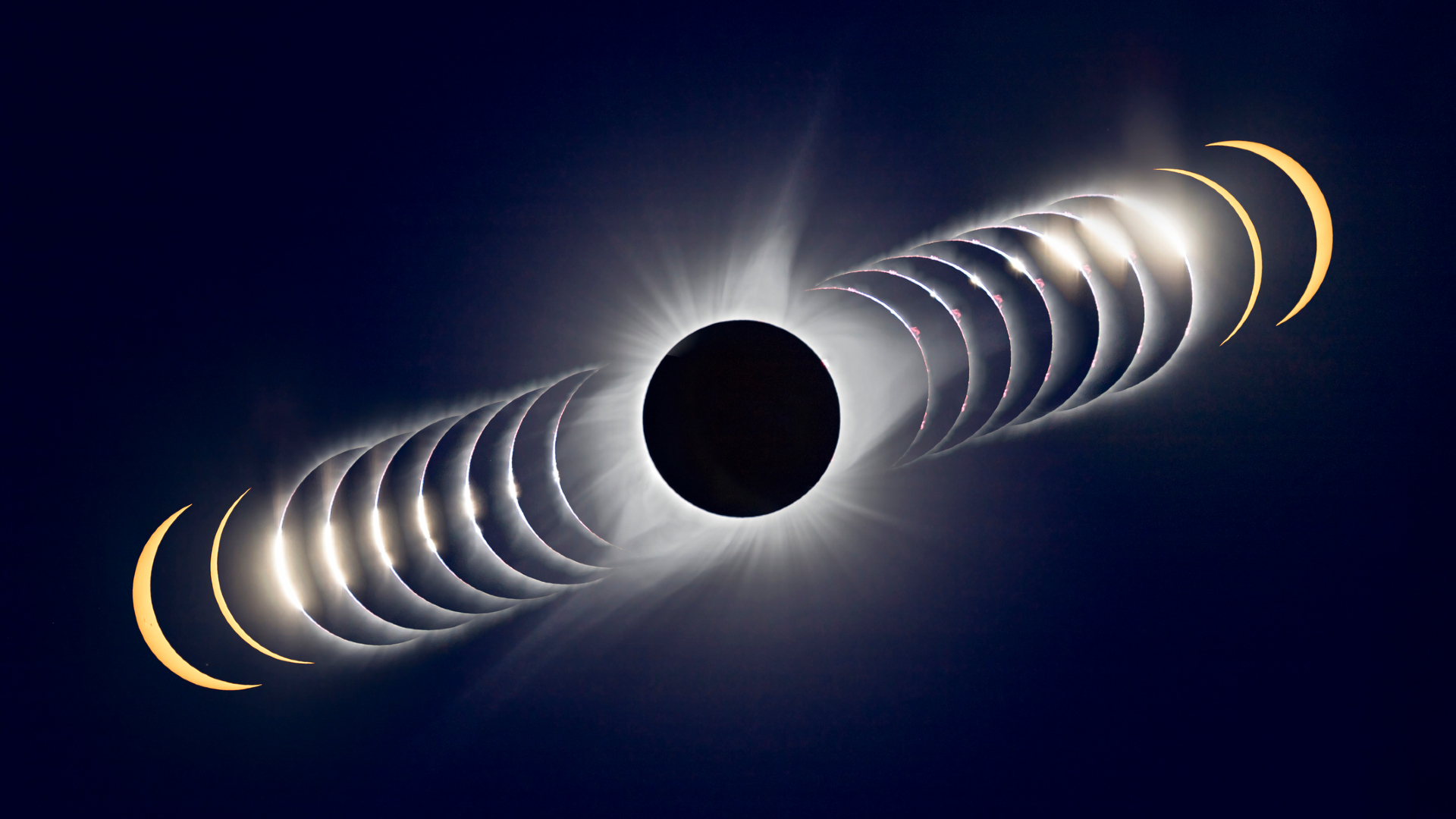Get an Up-Close Look at Boeing's New CST-100 Starliner Spaceship (Photos)
CAPE CANAVERAL, Fla. — Tucked inside a former space shuttle parking garage is Boeing's CST-100 Starliner capsule. It's one of two new private space taxis that NASA has commissioned to ferry astronauts to and from the International Space Station (ISS).
On Aug. 9, Boeing invited members of the media into the company's facilities here at NASA's Kennedy Space Center for a behind-the-scenes tour and a chance to meet the astronauts who will be flying the spacecraft as early as next year.
NASA announced those "Commercial Crew Nine" astronauts on Aug. 3, during a ceremony at Johnson Space Center in Houston. [Meet the SpaceX and Boeing Astronaut Crews]
A Road to Orbit
Before Starliner becomes operational, it must go through a series of uncrewed and crewed test flights. During each of these, Starliner will launch and dock with the space station. While the capsule is in orbit, crews will evaluate the vehicle's systems, ensuring that everything is working as planned. The first of those tests, an uncrewed mission, could be carried out as soon as the end of this year, NASA officials have said.
Following that flight will be the first crewed test mission. Boeing's Chris Ferguson will join NASA astronauts Nicole Aunapu Mann and Eric Boe in the Starliner capsule as it ferries its first set of people to the space station.
This test flight, scheduled for mid-2019, could mark the first time astronauts will have launched into space from U.S. soil since the end of the shuttle program, in 2011. (However, SpaceX's Crew Dragon capsule — the other private astronaut taxi — is currently slated to fly its first crewed test mission in April 2019.) Ferguson, now a private astronaut working for Boeing, also flew on that last shuttle mission. "It's a really exciting time," Ferguson told reporters during the Aug. 9 event.
Breaking space news, the latest updates on rocket launches, skywatching events and more!
"What's cool is this is our ride right here behind us," added Boe, who flew on two shuttle missions. "Nicole and Chris and myself have a chance to go fly this thing sometime in the near future."
That mission will be the first spaceflight for Mann. "I'm the rookie of the team, and today I got to climb inside my first spacecraft," she told Space.com. "I thought it would be pretty exciting, but I tell you, the feeling was really overwhelming." [Boeing’s CST-100 Starliner: A 21st Century Space Capsule in Photos]
All the astronauts were excited to meet the people working diligently to construct their ride to space. "I think the most rewarding part is working with the people who are making this happen," explained NASA astronaut Sunita Williams, who will be flying on the first official crewed mission with crewmate Josh Cassada.
Mann said she was thrilled to see engineers bolting in the avionics system on the spacecraft she will be flying on next year. She described the crew's visit to the launchpad, saying there are about 300 steps they'll have to climb to get to the crew access arm and the "white room" — the last stop before boarding their spacecraft.
"I can imagine the rocket [on the pad] with the Starliner stacked on top, and I look forward to the day we launch from Florida," Mann said.
When Starliner takes off, it will be perched atop a United Launch Alliance Atlas V rocket. Ferguson explained that the last time an American launched to space aboard an Atlas was 55 years ago. That astronaut was Gordon Cooper, one of the original Mercury Seven. "To know that the last person that flew an Atlas was one of your heroes — that's pretty cool," Ferguson said.
According to Boe, it will take about 10 minutes to get to orbit aboard the Atlas V/Starliner, and the ride will be much smoother than the ones astronauts experienced on the shuttle. [NASA's Space Shuttle Program in Pictures: A Tribute]
Orbital flight testing
Ferguson said the uncrewed test mission will have about 220 flight-test objectives. For example, does the vehicle get to the proper orbit? Does it navigate itself like it should, and does the propellant system work? Can it dock with the space station? Boeing hopes to check off at least 80 percent of those objectives, Ferguson said.
The crewed flight tests will have different objectives, he said. The goal is to make sure the vehicle's systems work so that when people climb aboard, they will just be testing the human element of the vehicle — answering questions like how loud the jets are, whether the hygiene and environmental control systems work, and what the noise levels are like inside the capsulen. "We want to verify that it accommodates humans," he explained.
Ferguson also revealed that during the uncrewed test flight, crews on the ground will take over during part of the flight to ensure that the craft can be controlled from the ground as expected.
Williams said she is really looking forward to the test campaign. "This is really a test pilot's dream," she told Space.com. The veteran Williams, who will fly with rookie astronaut Josh Cassada, said she was ready to hang up her space shoes, but then this opportunity came along and she could not pass it up. "[Josh and I] can't wait to see how the vehicle docks to the space station," she explained. "It's going to do it by itself, and we're excited to see the software really work."
"I wasn't sure the [astronaut] office called the right number," Josh said when asked how he felt about being chosen. "But this is what we've been training for, and I can't possibly imagine a better opportunity in spaceflight."
Both Williams and Cassada described the generalized training astronauts receive at NASA, which includes points like what the spacecraft is supposed to do and where it's supposed to go. But coming out to the cape to train with the crew at Boeing and the actual spacecraft is an incredible opportunity, Williams said. "It's different than shuttle and [Russia's] Soyuz, because everything's already been mapped out," Williams said. "Here, it's still being created and is brand-new."
According to Williams, the big difference between Starliner and the other spacecraft she has flown is the novelty. She and the rest of the crew are essentially writing the instruction manuals that future astronauts will use to fly Starliner.
"There's definitely going to be a learning curve," she said. "Our job is to learn this spacecraft, focus on this vehicle specifically, so that it will be easier for future astronauts."
Safety first
Another major difference between past vehicles and Starliner is the new craft's launch escape system: an ejection system for the crew that will whisk them away to safety in an emergency.
"We hope to never [have to] use this system," Ferguson said. "This vehicle has a full capability to abort anywhere in the ascent trajectory." The space shuttle did not have that capability.
Williams said that even though Starliner is a new vehicle, she feels it is safer than previous ones, because past lessons are being incorporated into the new craft's design. The astronauts have been lucky enough to work with the folks in Houston in simulators, making sure things get better and better, she added.
"We bring our experience from the past, and these guys are answering the call," she said. "This vehicle is better, safer and smarter than previous ones."
But "we can't eliminate all risk. We'll never get down to zero," Cassada added. "If we needed and demanded zero risk, then no one would ever leave their home."
Follow us @Spacedotcom, Facebook and Google+. Original article on Space.com.

Amy Thompson is a Florida-based space and science journalist, who joined Space.com as a contributing writer in 2015. She's passionate about all things space and is a huge science and science-fiction geek. Star Wars is her favorite fandom, with that sassy little droid, R2D2 being her favorite. She studied science at the University of Florida, earning a degree in microbiology. Her work has also been published in Newsweek, VICE, Smithsonian, and many more. Now she chases rockets, writing about launches, commercial space, space station science, and everything in between.




